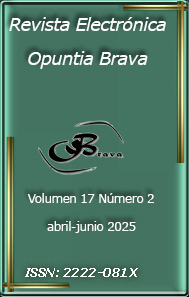Análisis crítico de la Inteligencia Artificial Generativa en teorías del lenguaje
Palabras clave:
abandono, derecho a la defensa, interés superior del niño, juicio de alimentos, citaciónResumen
La inteligencia artificial generativa (GAI) ha redefinido la producción de lenguaje, influyendo en ámbitos que van desde la educación hasta la creación de contenido. Sin embargo, su evolución no es únicamente un logro computacional; está profundamente arraigada en teorías lingüísticas que moldean sus capacidades y limitaciones. Este artículo examina críticamente la relación simbiótica pero asimétrica entre la lingüística y la IAG, destacando cómo los principios lingüísticos informan el diseño de modelos mientras son instrumentalizados sin reflexión ética o cognitiva. Desde un enfoque de investigación cualitativa con un alcance crítico-analítico, este estudio realiza una revisión sistemática de la literatura reciente, en donde compara perspectivas teóricas y empíricas sobre la dependencia de los marcos lingüísticos por parte de la IAG. A través del análisis del discurso, explora dos dimensiones clave: (1) la apropiación selectiva de teorías lingüísticas en la arquitectura de modelos y (2) las preocupaciones éticas en la generación de contenido. Los hallazgos indican que, aunque modelos como GPT-4 y BERT integran sintaxis y semántica, no logran captar las sutilezas pragmáticas y socioculturales, lo que refuerza las inequidades sistémicas. El estudio concluye que la futura investigación interdisciplinaria ha de priorizar marcos éticos de IA, la diversidad lingüística y la modelización cognitiva para desarrollar sistemas generativos más inclusivos y responsables. Este enfoque crítico subraya la necesidad de ir más allá de la mera optimización tecnológica hacia un paradigma de IA más equitativo y consciente lingüísticamente.
Descargas
Citas
Alvero, A. J., Lee, J., Regla-Vargas, A. et al. (2024). Large language models, social demography, and hegemony: comparing authorship in human and synthetic text. https://doi.org/10.1186/s40537-024-00986-7
Beerends, S. & Aydin, C. (2024). Negotiating the authenticity of AI: how the discourse on AI rejects human indeterminacy. https://doi.org/10.1007/s00146-024-01884-5
Bernal Leongómez, J. (1984). Tres momentos estelares en lingüística. https://selloeditorial.caroycuervo.gov.co/detalle-libro/tres-momentos-estelares-en-lingistica-pdf
Berwick, R. C., Chomsky, N. et al. (2013). Evolution, brain, and the nature of language. https://doi.org/10.1016/j.tics.2012.12.002
Bolaño García, M. (2024). Inteligencia artificial para la educación: desafíos y oportunidades. Praxis, 20(1), 8–12. https://doi.org/10.21676/23897856.5997
Brown, T. et al. (2020). Language Models are Few-Shot Learners. https://arxiv.org/abs/2005.14165
Chomsky, N. (1965). Aspects of the theory of syntax. MIT Press.
Colin, R. et al. (2020). Exploring the Limits of Transfer Learning with a Unified Text-to-Text Transformer. https://jmlr.org/papers/volume21/20-074/20-074.pdf
Devlin, J., Chang, M. W., Lee, K. & Toutanova, K. (2019). BERT: Pre-training of deep bidirectional transformers for language understanding. Proceedings of NAACL-HLT 2019. https://www.aclweb.org/anthology/N19-1423/
Dwork, C. & Roth, A. (2014). The Algorithmic Foundations of Differential Privacy. Foundations and Trends® in Theoretical Computer Science, 9(3–4), 211-407. http://dx.doi.org/10.1561/0400000042
Fairclough, N. (1992). Discourse and social change. Polity Press.
Gallent-Torres, C. et al. (2023). El impacto de la inteligencia artificial generativa en educación superior: una mirada desde la ética y la integridad académica. https://doi.org/10.30827/relieve.v29i2.29134
Greco, C. M. & Tagarelli, A. (2024). Ordenando el ámbito de los modelos lingüísticos basados en Transformers para la inteligencia artificial y el derecho. Artif Intell Law, 32, 863–1010. https://doi.org/10.1007/s10506-023-09374-7
Greemberg, J. (1963). Some universals of grammar with particular reference to the order of meaningful elements. En Joseph H. Greenberg (ed.), Universals of Language (2ª ed.), 73-113. MIT Press. https://babel.ucsc.edu/~hank/114/greenberg.pdf
Inoue, H. (2024). Ecological AI models: Towards linguistic diversity and inclusivity. Linguistic Frontiers in AI Research, 21(4), 56-72. https://www.researchgate.net/publication/385652682_The_Education_Revolution_through_Artificial_Intelligence_Enhancing_Skills_Safeguarding_Rights_and_Facilitating_Human-Machine_Collaboration
Jain, R. et al. (2024). Digital divide and AI accessibility: An educational perspective. Computers in Education Review, 32(1), 100-118. https://www.researchgate.net/publication/371575436_Addressing_the_Digital_Divide_Access_and_Use_of_Technology_in_Education
Jackson, C. (2018). Learn programming in python with Cody Jackson: Grasp the basics of programming and Python syntax while building real-world applications. https://www.abebooks.co.uk/9781789531947/Learn-Programming-Python-Cody-Jackson-1789531942/plp
Kessler, T. & Casal, M. (2024). The role of linguists in AI ethics: Transparency and bias mitigation. Journal of Applied Linguistics and AI Ethics, 18(2), 65-84. https://www.researchgate.net/profile/George-Benneh-Mensah/publication/375744287_Artificial_Intelligence_and_Ethics_A_Comprehensive_Review_of_Bias_Mitigation_Transparency_and_Accountability_in_AI_
Kieslich, K. & Lünich, M. (2024). Regulating AI-Based Remote Biometric Identification. Investigating the Public Demand for Bans, Audits, and Public Database Registrations. https://facctconference.org/static/papers24/facct24-12.pdf
Koc, V. (2025). Generative AI and Large Language Models in Language Preservation: Opportunities and Challenges. https://arxiv.org/html/2501.11496v1
Li, B., Nye, M. & Andreas, J. (2021). Implicit Representations of Meaning in Neural Language Models. In Proceedings of the 59th Annual Meeting of the Association for Computational Linguistics and the 11th International Joint Conference on Natural Language Processing. https://doi.org/10.18653/v1/2021.acl-long.143
Li, X. et al. (2024). The transparency challenge in AI: Dataset opacity and accountability. https://doi.org/10.1016/j.dss.2020.113302
Mohammed, Q. & Shormani, I. (2024). Generative linguistics contribution to artificial intelligence: Where this contribution lies? https://www.arxiv.org/pdf/2410.20221
Muñoz Basols, J., Palomares Marín, M. & Moreno Fernández, F. (2024). El Sesgo Lingüístico Digital (SLD) en la inteligencia artificial: implicaciones para los modelos de lenguaje masivos en español. https://doi.org/10.15381/lengsoc.v23i2.28665
Nguyen, A. et al. (2023). Democratizing AI: The role of linguistic corpora in low-resource languages. Journal of Computational Linguistics and AI, 45(3), 125-140. https://doi.org/10.48550/arXiv.2306.11372
Névéol, A., Dalianis, H., Velupillai, S., Savova, G. & Zweigenbaum, P. (2018a). Clinical Natural Language Processing in languages other than English: opportunities and challenges. J Biomed Semantics, 9(1), 12. https://jbiomedsem.biomedcentral.com/articles/10.1186/s13326-018-0179-8
Névéol, A., et al. (2018b). Clinical NLP for underrepresented languages: Challenges and perspectives. Journal of Biomedical Informatics, 88, 125-142. https://jbiomedsem.biomedcentral.com/articles/10.1186/s13326-018-0179-8
Paulus, T. M. & Marone, V. (2024). In minutes instead of weeks: Discursive constructions of generative AI and qualitative data analysis. https://doi.org/10.1177/10778004241250065
Pannachin, C. & Goertzel, B. (2007). Contemporary approaches to artifcial general intelligence. ennachin, C., Goertzel, B. (2007). Contemporary Approaches to Artificial General Intelligence. In Goertzel, B., Pennachin, C. (eds) Artificial General Intelligence. Cognitive Technologies.
Springer, Berlin, Heidelberg. https://doi.org/10.1007/978-3-540-68677-4_1
Pérez Ugena, C. (2024). Sesgo de género (en IA). Eunomía. Revista en Cultura de la Legalidad, 26, 311-330. https://doi.org/10.20318/eunomia.2024.8515
Rentier, E. (2024). To use or not to use: exploring the ethical implications of using generative AI in academic writing. https://doi.org/10.1007/s43681-024-00649-6
Riccardi, A., et al. (2024). The Two Word Test: Evaluating semantic coherence in large language models. Computational Semantics Review. https://www.nature.com/articles/s41598-024-72528-3.pdf
Loftus, T. J., Balch, J. A., Abbott, K. L., Hu, D., Ruppert, M. M., Shickel, B., Ozrazgat-Baslanti, T., Efron, P. A., Tighe, P. J., Hogan, W. R., Rashidi, P., Cardel, M. I. Upchurch, G. R. & Bihorac A. (2024). Community-engaged artificial intelligence research: A scoping review. https://journals.plos.org/digitalhealth/article?id=10.1371/journal.pdig.0000561
Uchechukwu, A. (2025). Memory Architectures in Long-Term AI Agents: Beyond Simple State Representation. https://doi.org/10.13140/RG.2.2.26486.51527
Van Dijk, T. A. (1993). Elite discourse and racism. SAGE Publications.
Watson, D. (2019). The Rhetoric and Reality of Anthropomorphism in Artificial Intelligence. Minds & Machines 29, 417–440. https://doi.org/10.1007/s11023-019-09506-6
Zhang, Y. et al. (2023). SemBERT: Enhancing BERT with semantic role labeling. https://ojs.aaai.org/index.php/AAAI/article/view/6510



































































